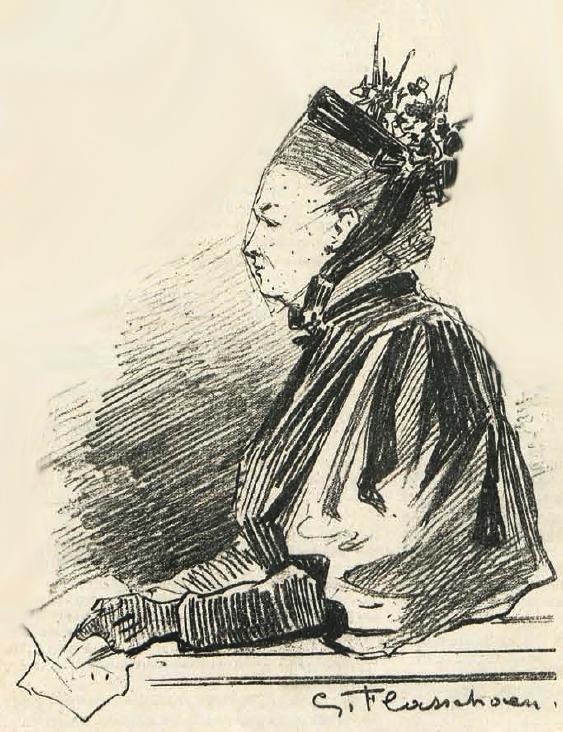.jpg)
b: 1844
Marie-Thérèse Joniaux
Summary
Name:
Years Active:
1892 - 1894Birth:
October 15, 1844Status:
DeceasedClass:
Serial KillerVictims:
3Method:
PoisoningNationality:
Belgium.jpg)
b: 1844
Marie-Thérèse Joniaux
Summary: Serial Killer
Name:
Marie-Thérèse JoniauxStatus:
DeceasedVictims:
3Method:
PoisoningNationality:
BelgiumBirth:
October 15, 1844Years Active:
1892 - 1894Date Convicted:
February 2, 1895bio
Marie-Thérèse Joniaux was born Maria Teresa Joséphe Ablaÿ on 15 October 1844 in Mechelen, Belgium. Her family came from a strong military lineage with deep ties to early 19th-century Belgian society. Her father, Jules-Gustave Ablaÿ, was a lieutenant-general and served as aide-de-camp to the King. Her uncles Omer and Narcisse also held high military ranks. Her mother, Thérèse de Ryckman de Betz, bore six children—Marie-Thérèse being the eldest and reportedly her father’s favorite, known for her intelligence and charm.
At age 24, she married Frédéric Faber, a bibliophile with little interest in family life. Their marriage, strained by class expectations and personal detachment, produced one daughter, Jeanne. Faber died in 1884 under what would later be considered suspicious circumstances. After observing the socially expected mourning period, Marie-Thérèse remarried—this time to Henri Joniaux, a widower with three children and a prestigious engineering post in Antwerp.
Her second marriage did not resolve her growing financial instability. The death of her first husband left her saddled with significant debt, which she attempted to mask with continued displays of upper-class living. She used her daughter’s inheritance and pawned valuables, even resorting to small-scale loans and deceptive pleas for help from family, often through emotional manipulation. In a desperate bid to maintain her lifestyle, she leaned heavily on her persuasive skills, eventually venturing into anonymous blackmail letters.
By 1890, Marie-Thérèse was fully entrenched in financial deception, taking advantage of family members under the guise of protecting “family honor.”
murder story
Marie-Thérèse’s transition from fraud to murder began with a calculated scheme in early 1892. Her sister, Léonie Ablaÿ, became the target of a life insurance policy totaling 70,000 Belgian francs. To facilitate the plan, Marie-Thérèse invited Léonie to stay with her in Antwerp under the pretense of helping with her daughter Jeanne’s wedding. Soon after, Léonie’s health declined rapidly. On February 24, 1892, she fell seriously ill in the middle of the night and was attended to by a doctor who believed she had contracted typhus. Léonie died shortly after. The insurance companies paid out in March and April 1892.
Flush with new funds, Joniaux went on holiday to Monaco and Italy, settling debts, but her lifestyle quickly outran her resources again. That autumn, her elderly uncle-by-marriage, Jacques Van de Kerkhove, came for a family dinner. After the meal, he suddenly felt ill and died the next morning. Though doctors attributed it to cerebral apoplexy, the abruptness raised suspicions later. The inheritance passed to her husband, not directly to her, but it bought her time.
Her next and final confirmed victim was her brother, Alfred Ablaÿ, a former cavalry officer recently unemployed and seeking financial aid. She lured him to Antwerp with the promise of support, convincing him to sign over a life insurance policy worth 100,000 Belgian francs, underwritten by the Gresham Insurance Company in London with her as beneficiary. On the night of March 5–6, 1894, Alfred died while staying in her home. A Brussels doctor, misled by prior discussions, attributed the death to heart failure.
But Gresham Insurance found the situation too coincidental. They alerted authorities, launching what would become known as the Joniaux Affair. Police arrested Marie-Thérèse on April 17, 1894. The ensuing investigation uncovered suspicious financial movements, insurance documents, and witness statements tying her to a pattern of premeditated killings tied to life insurance payouts and family debts.
The trial was a massive public spectacle. It opened in January 1895 and lasted over a month, with 296 witnesses testifying. Lead prosecutor Eugène Hayoit de Termicourt painted a picture of greed, manipulation, and cold-blooded murder. On February 3, 1895, Marie-Thérèse Joniaux was convicted of three counts of poisoning and sentenced to death.

However, due to her gender and public pressure, her sentence was commuted to life imprisonment. She was transferred from Antwerp to Mons prison in June 1895. Despite multiple appeals, her conviction stood. While in prison, she authored a memoir, likely in an attempt to rewrite her narrative.
Marie-Thérèse Joniaux died in 1923, at the age of 79, still incarcerated.